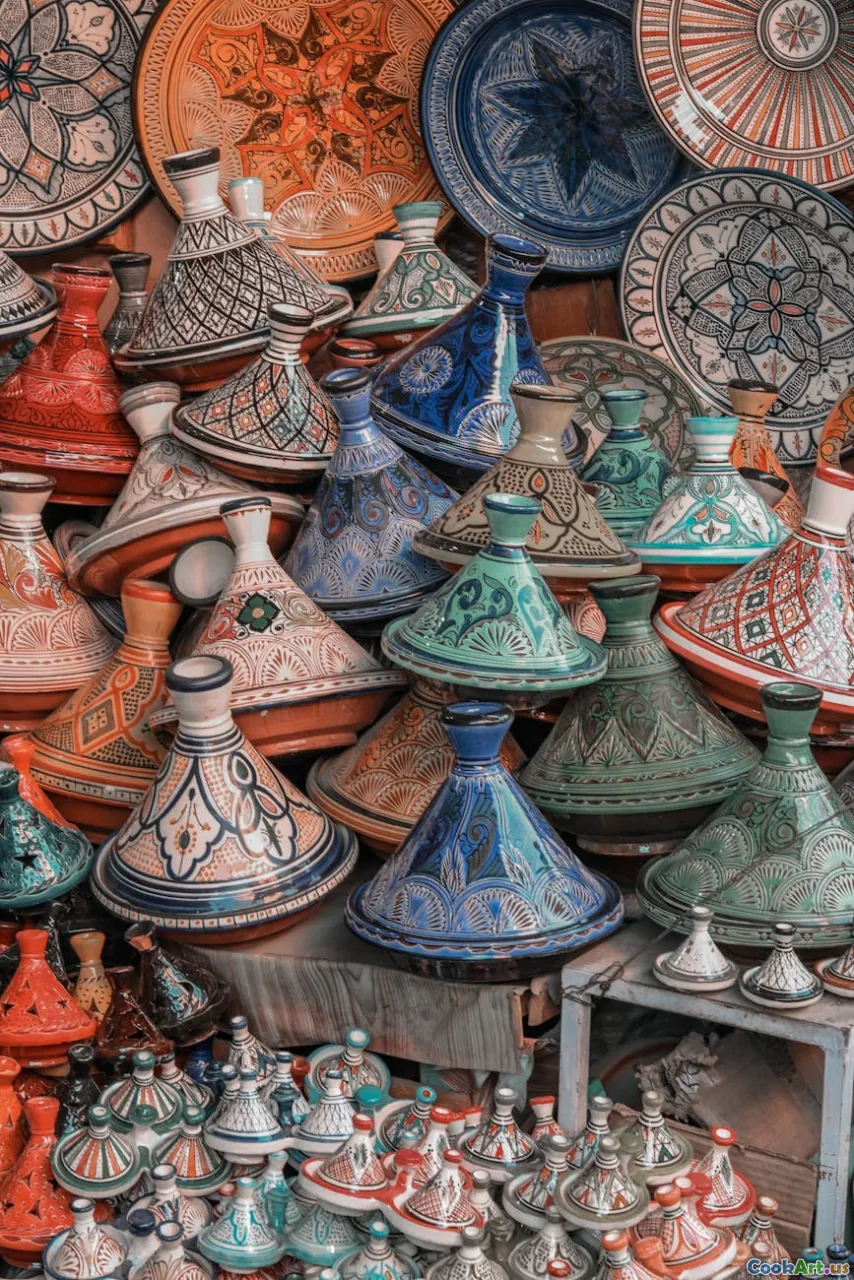A Journey Through Moroccan Food Markets
8 min read Immerse yourself in the vibrant world of Moroccan food markets, where colors, aromas, and traditions intertwine to create a sensory tapestry of authentic flavors. May 17, 2025 03:00
A Journey Through Moroccan Food Markets
Morocco, a land where antiquity meets vibrancy, is renowned for its rich tapestry of culture, history, and cuisine. Among the most enchanting ways to experience this diverse heritage is through its bustling food markets — the souks. These lively marketplaces are more than just shopping venues; they are living, breathing embodiments of Moroccan life, offering a sensory explosion that beckons travelers and locals alike. Join me as I take you on a vivid journey through the heart of Morocco’s food markets, revealing their stories, flavors, and secrets.
The Soul of Morocco: An Introduction to the Souks
Stepping into a Moroccan souk is akin to entering a kaleidoscope of sights, sounds, and smells. Narrow alleyways wind through stalls overflowing with fresh produce, fragrant spices, handcrafted ceramics, and vibrant textiles. The markets are ancient yet timeless, their roots stretching back centuries, serving as vital hubs for trade, social interaction, and cultural expression.
In cities like Marrakech, Fès, and Chefchaouen, each souk has its unique character. Marrakech’s Jemaa el-Fnaa, although primarily a square, transforms into a bustling market at night, alive with storytellers, snake charmers, and food vendors. Fès el-Bali’s medina is a labyrinth of winding streets where artisans and spice merchants preside over their crafts.
The Palette of Flavors and Aromas
One cannot describe Moroccan food markets without emphasizing their intoxicating aromas. The air is thick with the scent of cumin, saffron, coriander, and cinnamon, mingling with the sweetness of dried fruits and the earthiness of fresh herbs.
Spices: The Heartbeat of Moroccan Cuisine
Spice stalls are the soul of the market. Mounds of brightly colored powders—turmeric, paprika, ras el hanout—are displayed in wooden bowls, their fragrances beckoning to passersby. The process of selecting spices is an art; vendors often blend their own signature mixes, telling stories of their heritage with each pinch.
Fresh Produce: Nature’s Bounty
Vivid displays of seasonal fruits and vegetables are arranged with meticulous care. Juicy pomegranates, golden apricots, plump olives, and clusters of dates speak of Morocco’s agricultural richness. Green herbs like parsley, cilantro, and mint are piled high, ready to flavor tagines and salads.
The Art of Food in the Market
Walking through a Moroccan food market is an immersive experience—not just visual but tactile and gustatory.
The Meat and Fish Stalls
Freshly slaughtered lamb, beef, and chicken are on display, often skinned and prepared on the spot. The scent of grilled fish, seasoned with lemon and herbs, fills the air near the coastlines. Vendors skillfully fillet and prepare meat, offering ready-to-cook cuts or seasoned kebabs.
The Breads and Pastries
Bakeries within markets produce warm, fragrant flatbreads like khobz, which serve as a staple accompaniment. Pastries such as baklava, with layers of honey and nuts, tempt passersby.
The Dried and Preserved
Dried figs, almonds, and preserved lemons are tucked into woven baskets. These ingredients are essential for traditional dishes and showcase Morocco’s ingenuity in food preservation.
Signature Dishes and Culinary Secrets
The markets are the birthplace of many Moroccan staples.
Tagine Ingredients
Fresh vegetables, meats, and dried fruits are selected for the iconic tagine—a slow-cooked stew named after its earthenware pot. The process involves layering flavors, with each ingredient adding depth and aroma.
Mint Tea and Confections
No market visit is complete without sampling mint tea—sweet, fragrant, and served with a flourish. Confections like chebakia (sesame cookies dipped in honey) are also popular treats.
Personal Encounters and Local Stories
My own adventures in Moroccan markets have been filled with warm smiles and lively bargaining. I remember the spice merchant in Fès, whose stories of family recipes made each pinch of saffron feel like a treasure. The elderly woman selling fresh herbs in Marrakech’s souk shared tales of traditional remedies, her hands moving deftly among the bunches.
These interactions reveal the deep connection Moroccans have with their food, passed down through generations, wrapped in stories and shared with love.
The Cultural Significance of the Markets
Moroccan food markets are more than commerce; they are social hubs and cultural symbols. They reflect Morocco’s history of trade along ancient caravan routes, blending Arab, Berber, African, and Mediterranean influences.
The markets also serve as classrooms—where cooks learn from elders, where recipes are exchanged, and traditions are kept alive.
Practical Tips for Exploring Moroccan Food Markets
- Go Early or Late: Markets are most vibrant at dawn or just before closing, when vendors are fresh and the crowd is manageable.
- Haggle Respectfully: Bargaining is part of the culture; do so with a smile and a respectful attitude.
- Sample Widely: Don’t hesitate to try small bites from different stalls—each offers a unique story.
- Engage with Vendors: Asking about their products often leads to fascinating conversations and insider tips.
Concluding Reflections
Traveling through Moroccan food markets is an unforgettable journey—a feast for the senses and a window into the soul of a nation. These vibrant spaces embody Morocco’s history, diversity, and warm hospitality. They remind us that food is more than sustenance; it is a language of love, identity, and community.
So next time you find yourself wandering through a Moroccan souk, remember — you’re not just shopping; you’re immersing yourself in a living tradition that has nourished generations and continues to thrive today. Embrace the chaos, savor the flavors, and let the markets tell you their stories.
Bon voyage and happy tasting!









